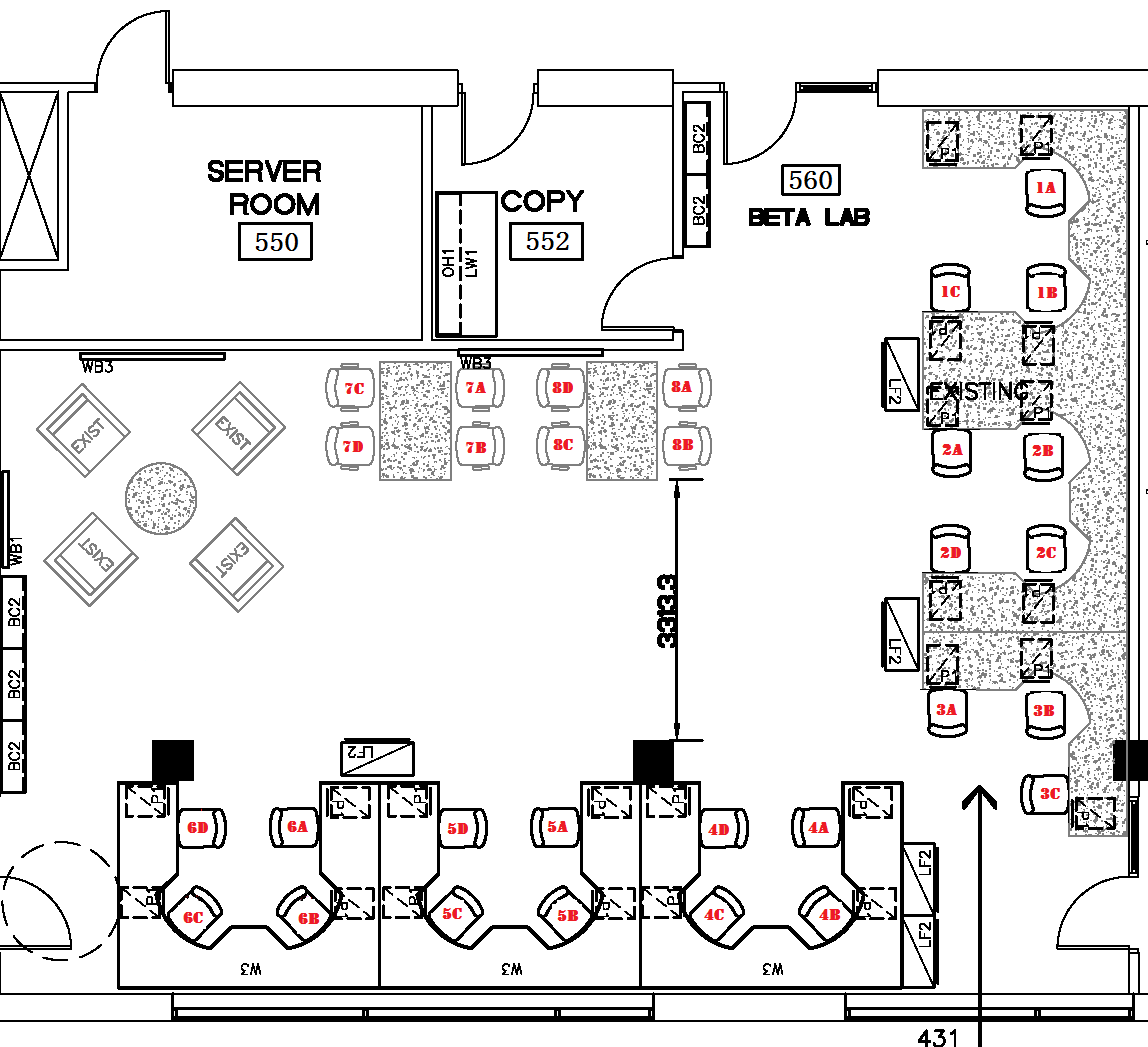| |
| META TOPICPARENT |
name="WebHome" |
BETA Lab Seating / Facilities |
| |
Our floor plan |
|
<
< |  |
>
> |  |
| |
BETA Lab |
|
<
< |  |
>
> |  |
| |
Current Assignments |
| |
|
|
<
< |
|
>
> |
|
| |
|
|
<
< |
|
>
> |
|
| |
|
| |
|
|
<
< | |
| | Official Policy |
|
<
< |
- Seats at the tables (X,Y & Z) cannot be permenently allocated, and are for visitors, drop-ins and office hours.
- When a new student joins BETA, he/she first chooses between an office and a lab seat
- If a new student chooses a lab seat, then he/she may select any free seat in the lab (ideally he/she might select a seat near students in a related research area) after consulting with the current lab seating czar.
- If multiple new students select the same seat, ties are broken randomly.
- When a student leaves BETA and his/her seat becomes vacant, that seat is made available to students in order of seniority.
- Seniority is measured in years as a graduate student at UBC (so a M.Sc. in Computer Science at SFU does not count toward seniority, whereas a M.Sc. in Biology at UBC does).
- Of course a student may choose to stay in his/her current seat, and pass the opportunity on to the next most senior student.
- In the case of a tie, then the student in the same research area as the departing student gets priority (to help maintain grouping by research area), and then randomly if necessary.
- It may be possible to move specific computers to new locations, but there is no guarantee.
|
>
> |
- Seats at the tables (X,Y & Z) cannot be permenently allocated, and are for visitors, drop-ins and office hours.
- When a new student joins BETA, he/she first chooses between an office and a lab seat
- If a new student chooses a lab seat, then he/she may select any free seat in the lab (ideally he/she might select a seat near students in a related research area) after consulting with the current lab seating czar.
- If multiple new students select the same seat, ties are broken randomly.
- When a student leaves BETA and his/her seat becomes vacant, that seat is made available to students in order of seniority.
- Seniority is measured in years as a graduate student at UBC (so a M.Sc. in Computer Science at SFU does not count toward seniority, whereas a M.Sc. in Biology at UBC does).
- Of course a student may choose to stay in his/her current seat, and pass the opportunity on to the next most senior student.
- In the case of a tie, then the student in the same research area as the departing student gets priority (to help maintain grouping by research area), and then randomly if necessary.
- It may be possible to move specific computers to new locations, but there is no guarantee.
|
| |
(note that the effective starting date may not be the actual starting date and incorporates leaves of absence, etc.) |




